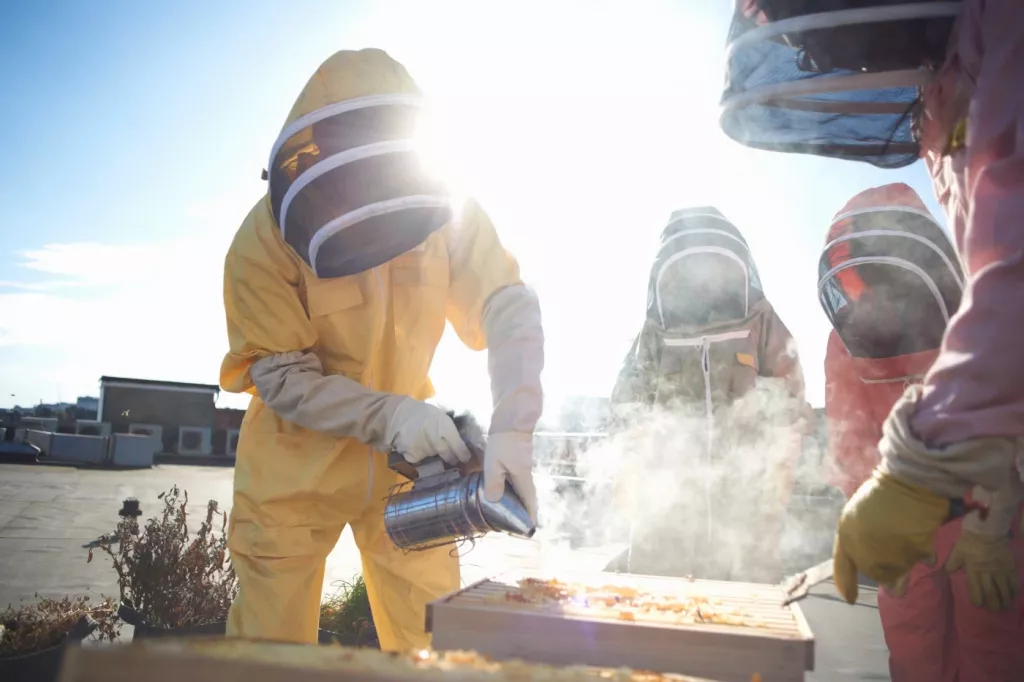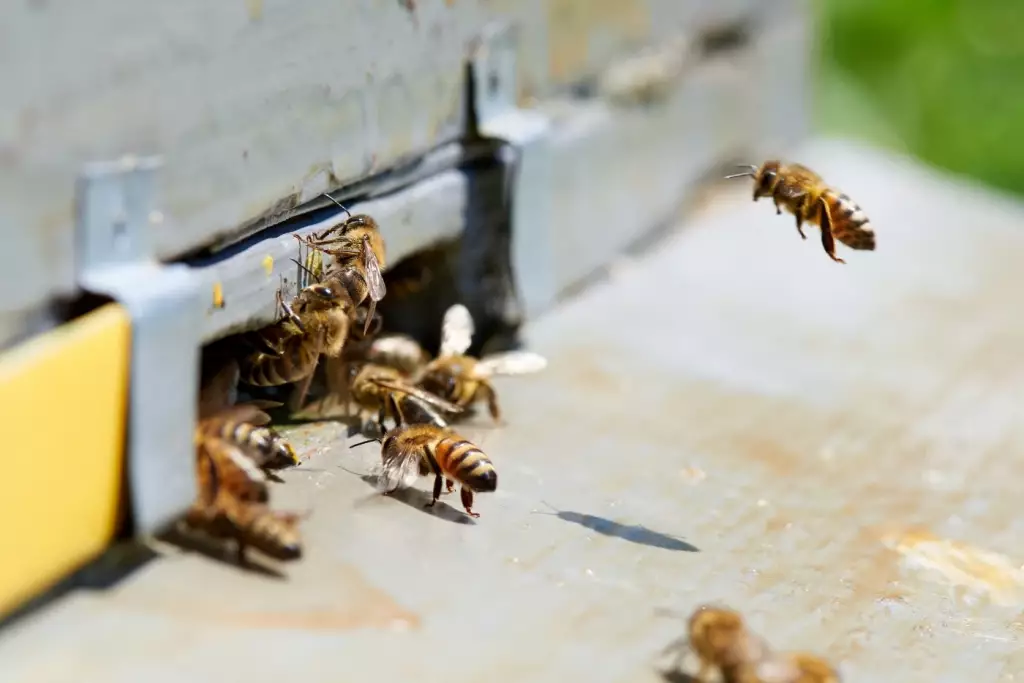What Temperature is Too Hot for Honey Bees?
For bees to thrive they need to be kept within a specific environmental temperature. Failing to do so might end in disaster for your hive. Luckily, there are ways to mitigate heat.
Temperatures above 113°F are too hot for adult honey bees, especially for prolonged periods. Nonetheless, they have a wide temperature tolerance range from 28°F to 113°F. They also have a higher heat tolerance than bee larvae, which can only survive 89.6°F to 97°F.
In caring for your honey bee colony and growing crops, you cannot control the weather and its associated temperatures. What you can control is the internal temperature of the beehives, which includes managing it within the endurable range. To learn everything about that range, and how to protect your bees against heat, read on!
Summary
- Generally, temperatures above 113°F are already too hot for honey bees
- Bearding, fanning at the hive's entrance, and honey melting from the beehive are indications that the temperature is too hot for the honey bees
- There are various ways to protect honey bees against extremely high temperatures including a water source, ventilation, more space, shade, nonmetal roofs, and insulation

On this page:
Temperatures That Are Too High for Honey Bees
Honey bees are adaptive to their environment. Given the various climates depending on the region, the specific temperatures bees can tolerate also vary according to the particular species. But generally speaking, bees can live and work well in temperatures within the range of 28°F to 113°F. The optimal temperature is 95°F while temperatures over 113°F are already dangerous for them.
Note that this temperature range is for adult honey bees. Bee larvae require a more controlled environment as they are still growing; hence they are less tolerant to fluctuating temperatures. The ideal temperature for bee larvae ranges from 89.6°F to 97°F. Temperatures above this could be fatal for them.
How to Identify if Honey Bees are Too Hot
There are helpful signs for beekeepers to know whether the temperature is getting hotter for honey bees. These indications include:
- Lots of bees gathering outside the hive also called bearding
- Bees fanning at the hive's entrance
- Honey or wax melting from the beehive
Bearding is a typical bee behavior that tells you that the temperature is too hot for the bees. It is when a large number of honey bees move outside their hive. They instinctively do this intending to prevent overcrowding inside their home.
The hive is getting too hot inside when honey bees fan frantically at the entrance. They do this to bring warm air from within and bring in fresh air. Then, the other bees will fan it inside to circulate the fresh air and cool the hive. The bees will also purposefully carry water inside the hive, place it on the comb, and flap their wings to cool the colony evaporatively.
Looking at the external structure of the hive, you will also notice that the wax or honey is melting. Although uncommon, this can happen in scorching summers when the hive has no shade to protect it from the sun and heat. You must take action as soon as possible if you observe this because, if this occurs, the entire colony will likely die.
What Happens to Honey Bees Exposed to High Temperatures
Honey bees are resilient little insects. When overheating, they naturally produce heat shock proteins (HSPs).
HSPs protect honey bees' cells against thermally-induced stresses brought by too-hot weather. However, HSPs are only beneficial for a limited time. Honey bees could still die when they are constantly in immensely high temperatures. The whole colony could.
Practices to Protect Honey Bees Against Super Hot Weather
As a beekeeper, your main goal is to keep your honey bees cool in super hot weather, especially if you expect it to last a significant amount of time. It necessitates keeping an eye on the hives on warmer days and taking the appropriate action to aid the bees in cooling the hive down, such as the following:
- Placing a constant water source close to the beehive
- Ensuring proper ventilation
- Expand the space inside the beehive
- Provide shade for your honey bees
- Remove or cover metal roofs
- Install insulation covers to the beehive

Water source near the beehive
Providing your bees with a convenient and secure water source near the bee hive is one of the best ways to help them stay cool in hot weather. The honey bees will have to spend less energy traveling great distances to get water this way. They can cool considerably more quickly using evaporating water than they could if the water source were farther away.
Ventilation
Ordinarily, beekeepers are advised against venting hives during hot weather because doing so may occasionally spill the fragrance of honey and expose your colony to robbery. However, it could prevent your colony from overheating and melting combs in extremely hot weather.
Making an upper entrance for the heat to rise through is the best technique to vent a hive. In the top super, I prefer to drill a one-inch hole. If the bees do not use this entrance, you can cover it with a screen so that heat can escape, but robbers are prevented from entering.
You can read more about how to ventilate properly here.
Expanded space inside
Giving bees additional room in the hive is another way to assist them in hot weather. This can be accomplished by putting another box on top, along with foundation sheets and frames. Heat will be able to rise into this box from the relatively empty lower space, permitting better air circulation inside.
Shade against direct sunlight
Another technique to assist your bees in maintaining a cool hive is to provide shade for them. The temperature within the beehive will quickly rise in direct sunlight. A tree can provide a natural shade or be created artificially by putting a shade tent or umbrella over the hive to shield it from the sun.
Less to no metal roofs
Metal roofs are popular among beekeepers because they are more resilient and frequently appear fashionable. However, metal conducts heat, which could be crucial during a heatwave. Topping your metal roof with something white, such as the lid of a large storage bin, or corrugated carton, or, even better, switching to wood roofing, can help reduce the temperature within the hive.
Insulations
Insulating your colony is another way to keep it cool. Beekeepers frequently use insulation to keep colonies warm during the winter, but it can also help them stay cool during summer. In particular, insulation underneath the roof will help to maintain constant temperatures inside the hive even when outside temperatures have risen.